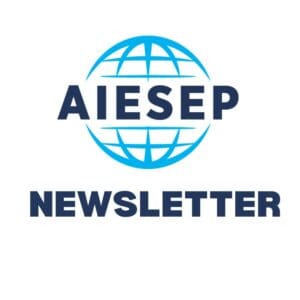How can we educate physical education teachers to help them to implement high quality lessons? This is the question which has been my personal interest as a teacher educator and researcher for decades. How can we educate ‘ethical, caring, critical, innovative, reflective, collaborative and communicative professionals who are advocates for students and quality physical education’ (see 2014 AIESEP Position Statement on Quality Physical Education Teacher Education)?
In Finland, at the University of Jyväskylä, a central module in our physical education teacher education programme, “Teacher as Researcher”, aims to develop preservice teachers’ abilities to recognize characteristics of good teaching and learn to identify them in their own teaching behaviour. The course is centred on videotaped microteaching lessons, which are subsequently analysed through various observation methods using educational technology.
The Teacher as Researcher module has its roots in the early 1980s, when preservice teachers learned to analyse their lessons through a paper-pencil protocol. Gradually, educational technology became an essential part of the module. During recent years, we have developed a digital learning environment that supports increasingly students’ reflective thinking and their teaching behaviours. Preservice teachers learn to use a web-based application called Moveatis for analysis of teaching situations. In addition, we employ an online digital platform, Peda.net, to support individual and interactive learning, in line with principles of personal learning environments. The primary aim of integrating technology within the Teacher as Researcher module has been to support teaching and learning though the design of pedagogically-meaningful technological enhancements. Moveatis and Peda.net are flexible, interactive, student-oriented learning environments.
During the Teacher as Researcher module, preservice teachers receive information about their teaching behaviour. For example, they can examine their ability to offer clear and detailed explanations of learning goals and expectations, the appropriateness and timeliness of the in-class feedback they provide, and their ability to listen to and respond to students during interactions. Results of research conducted within the module suggest that preservice teachers find it useful to learn to analyse teaching-learning situations, and to self-evaluate their teaching behaviour. The Teacher as Researcher module is seen as very useful in setting their own learning objectives and documenting their work. It is also valued for its use in reflecting upon their learning.
Educational technologies offer various possibilities for the enhancement of teaching and learning in higher education and for supporting the professional development of physical education teachers. In Finland, we have found that they hold potential for those seeking to better understand how quality physical education translates into individual teaching-learning encounters.
A call to action:
My research team and I would be very interested to connect with other researchers and teacher educators who are interested in the potential of technology for figuring out “what is going on in the gym?” There may be a collective wish for an AIESEP SIG dedicated to this topic. If you agree and are interested in becoming involved, please contact me at Pilvikki.Heikinaro-Johansson@jyu.fi
Let’s get the conversation going!


